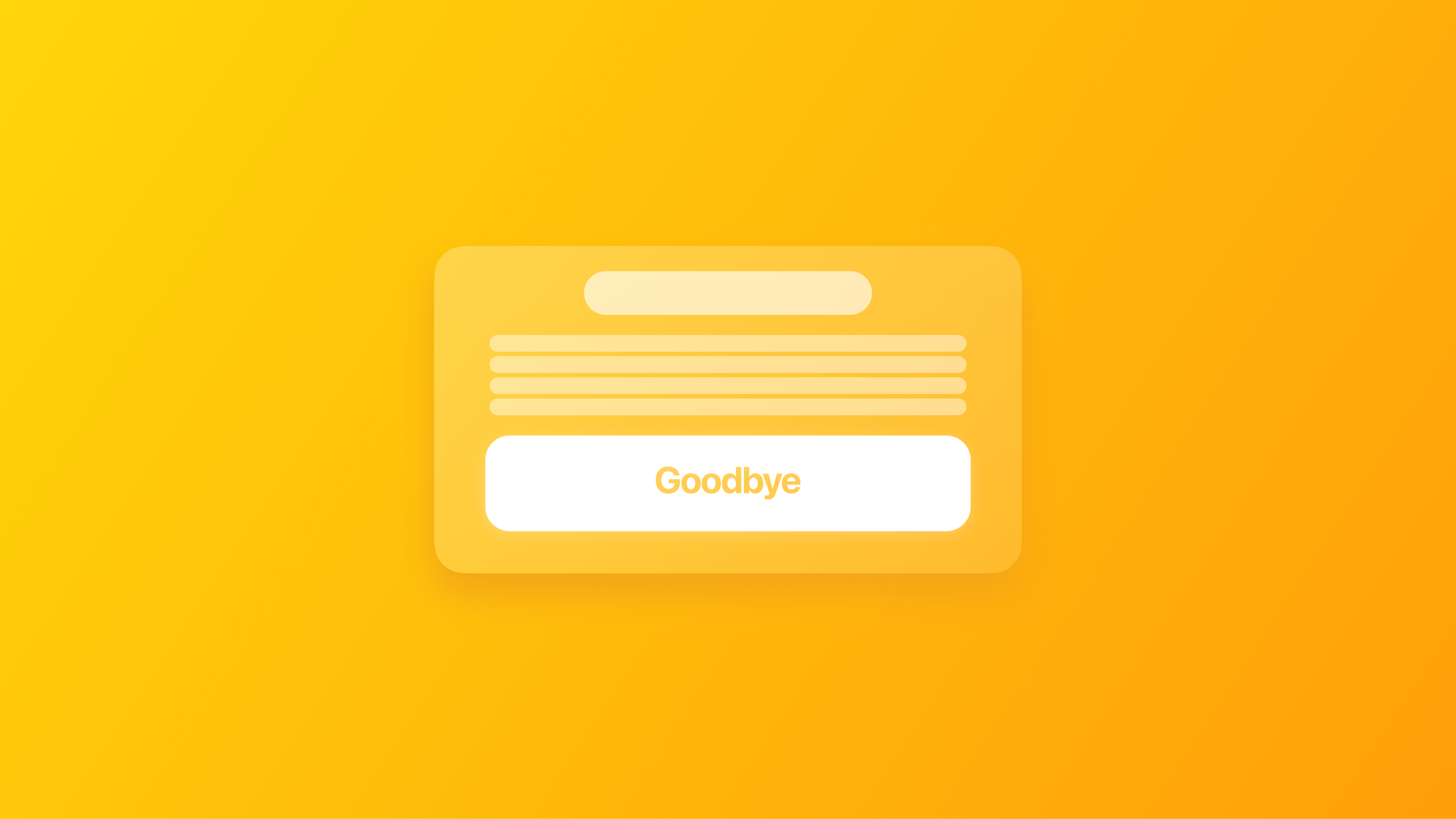
Navigating digital endings
Design delightful offboarding experiences for your applications.
When developing apps, developers often focus on creating a fantastic onboarding experience by making the app's features delightful. Yet, one aspect that is frequently overlooked is the end of the user's journey.
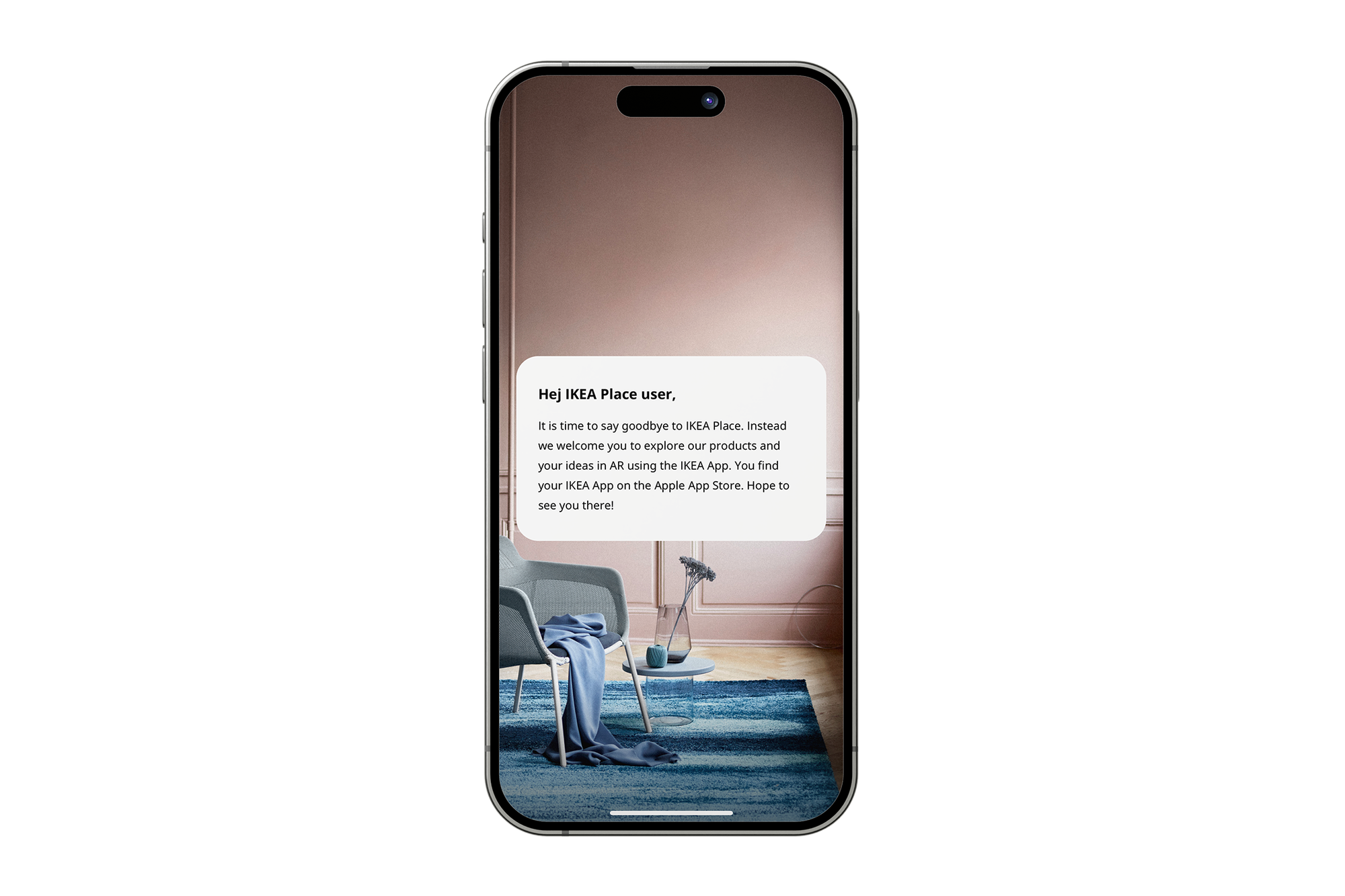
Offboarding honors the end of a user's journey, closing their experience in an app –for example, a travel app used for a specific trip or a real estate app that becomes irrelevant once a home is found. In these cases, the app becomes unnecessary, and users have the right to request the deletion of their data. Login credentials, saved preferences, and other personal information can reveal a lot about a user, and to ensure privacy, this data should be erased.
Being forgotten is a guaranteed right in data protection regulations across the globe. In Europe, this right is specified in Article 17 of the GDPR. Beyond simply logging out or deleting the app, offboarding is the act of erasing the data related to that specific user collected by the app and the service.
Beyond a legal requirement, delivering thoughtful offboarding experiences builds user trust, enhancing customer satisfaction as the perception of trust and responsibility can improve a brand's value.
Creating digital products with offboarding in mind also makes them greener. Joe Macleod is the founder of the world's first customer-ending business and writes about how companies can master their endgames with a higher focus on sustainability. Designing for the end of your user’s journey reflects a commitment to a user-centric and environmental philosophy.
Eliminating unneeded data, besides having a positive impact on the environment by reducing the CO2 consumption associated with data storage, can reduce business costs due to the expenses associated with maintaining inactive information stored.
Storing data consumes energy, it takes energy to get the data to the data centre and even more energy to keep it there. Data is often duplicated across multiple hard disks, and the constant activity of all those disks generates heat, requiring energy-intensive cooling systems to prevent equipment from overheating.
"This is the end, beautiful friend," this phase may sound alarming, but the end of life of the usefulness of an application for an user is far from apocalyptic. It addresses the critical need to rethink how digital products are designed when sustainability and user satisfaction are core features. Onboarding is an established practice across apps; amazing examples are easy to find, but when the topic is offboarding, it's not easy to find good practices.
The end of the user journey
Users have different motivations for ending their relationship with an app. Someone uses a dating app with the promise of finding their perfect match. After swiping left or right, they find their true love. The app delivered what it promised, the user’s journey successfully ended, and the user no longer needs the dating app.
Others might move to a new city and don't need a local restaurant app, or they may simply lose interest in the app. In each case, the app has fulfilled its purpose, and the user moves on.
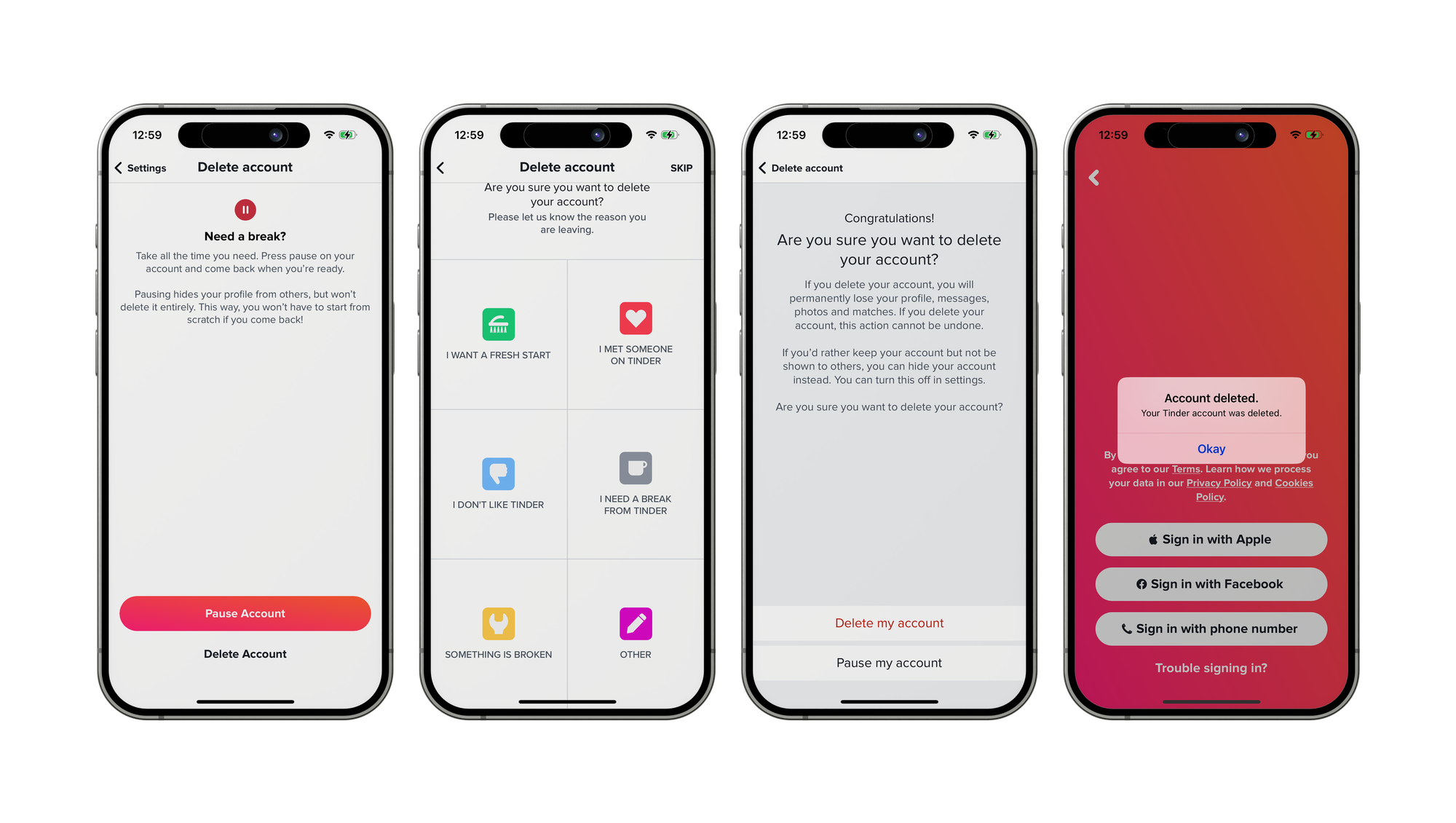
The user's perception of "my data was deleted" is just the start of the process of "the data is completely gone". There are services that, after the data deletion request is made, require a checking process to be done, while there are services that are legally required to maintain a record of their users’ activity for a certain period.
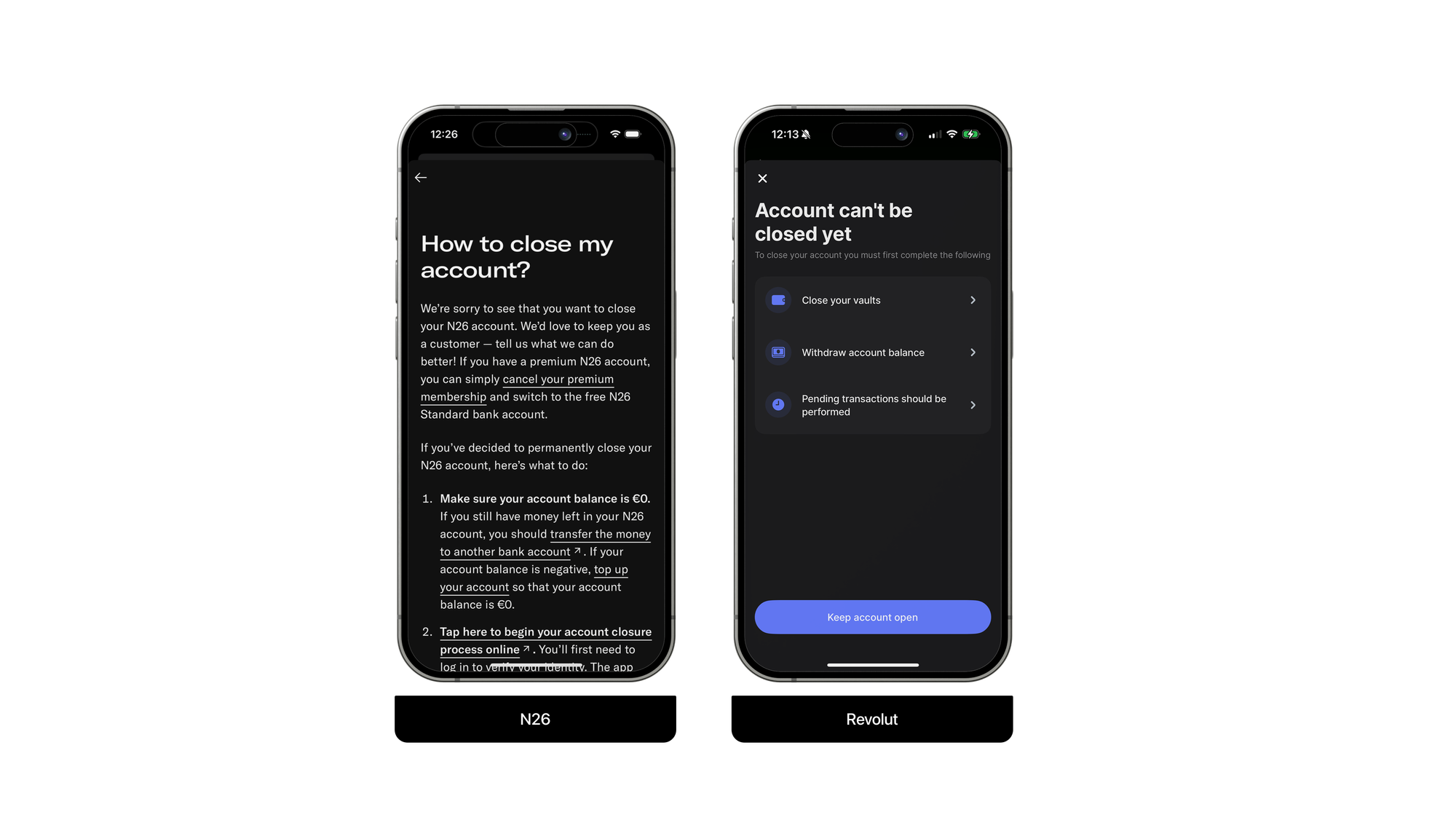
An example could be a banking account, where the user should remove the money before closing their account. To prevent scams, there shouldn't be any pending transactions to be concluded –since one could go shopping on the weekend, get the products, and close the account before Monday when the transactions would be processed.
In cases like this, communicate to your user in simple language –avoid jargon– the steps that will happen once their data deletion request is made.
The process of handling data deletion
After the users complete the offboarding flow, the ending flow continues now for the data itself. While the data is no longer available to users, it will still exist in the database, temporarily, and some procedures are carried out to ensure compliance with regulations. Usually, the process of data deletion goes like this:
- It begins by verifying the user's identity and flagging their account for deletion.
- The people responsible for the data storage carry the deletion procedures in the database.
- Purging data from backup storage, might not happen immediately due to the nature of backup systems, which often have retention policies for disaster recovery purposes.
- Any third-party services or partners with access to the user's data are notified to delete the data they hold, ensuring complete compliance with the deletion request.
For audit purposes, a record of the deletion request and its fulfillment is saved. This record does not contain the deleted data but registers the action taken.
Saying goodbye gracefully
A well-crafted offboarding flow not only guarantees legal compliance but also enhances user trust by ensuring their data is genuinely deleted. Paradoxically, it improves user satisfaction and can boost business value. It can make a business more profitable, as maintaining a database packed with superfluous data can drain profits. Deleting unwanted data not only saves money but also reduces carbon emissions used to maintain data storage.
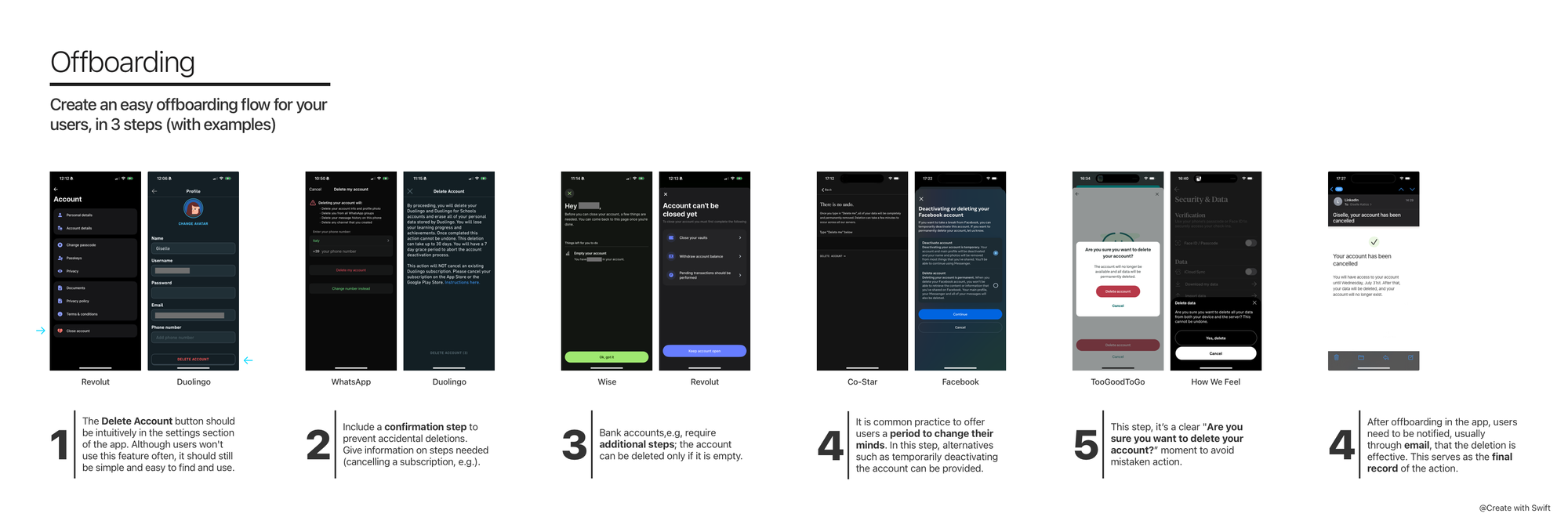
The end of the user journey can be seen as an app feature. It's an exploration of the fugacity of life; not everything needs to last forever. This concept was well explored by Snapchat, which built its brand around the idea of deleting content —with temporary images— aligning with the feeling that some digital experiences are inherently ephemeral.

